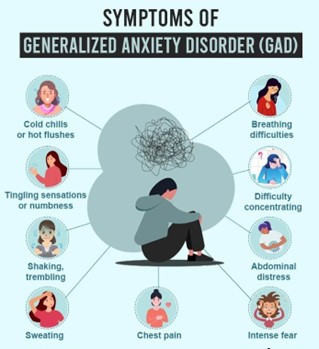What is the nurse's priority assessment for a patient with borderline personality disorder?
Suicidal or homicidal ideations
Sleep patern changes
Impulsive behaviours
Only support systems
The Correct Answer is A
Borderline personality disorder is a serious mental illness characterized by instability in mood, behaviour, and self-image. Patients with borderline personality disorder are at a high risk of self-harm, suicide, and impulsive behaviours. Therefore, the nurse's priority assessment should be to identify any suicidal or homicidal ideations, as these can be life-threatening emergencies. Once identified, appropriate interventions should be initiated, such as suicide precautions, crisis management, and referral to mental health professionals for further evaluation and treatment.
While sleep patern changes, impulsive behaviours, and support systems are also important aspects to assess in patients with borderline personality disorder, they are not the priority when compared to suicidal or homicidal ideations.

Nursing Test Bank
Naxlex Comprehensive Predictor Exams
Related Questions
Correct Answer is B
Explanation
Generalized anxiety disorder (GAD) is a type of anxiety disorder characterized by excessive and persistent worry about a variety of different things, including health, work, relationships, and everyday situations. People with GAD may experience physical symptoms, such as fatigue, muscle tension, and restlessness.
Option a is not a typical finding associated with GAD. Sudden unexplained loss of vision may be a symptom
of a neurological or ophthalmologic condition, but not specifically related to GAD.
Option c describes a condition called body dysmorphic disorder (BDD), which is a type of obsessive- compulsive disorder characterized by an excessive preoccupation with a perceived physical flaw. BDD is not typically associated with GAD.
Option d does not describe a typical finding associated with GAD. While physical health issues can contribute to anxiety, the need for surgeries within the last three months is not necessarily indicative of GAD.
Therefore, the correct option is b. Constant worry about the undiagnosed presence of an illness for more than 6 months. People with GAD often worry about their health and the possibility of having an undiagnosed illness, even when there is no evidence of a problem. This worry may persist for six months or more and can interfere with daily life.

Correct Answer is A
Explanation
Denial is a defense mechanism where an individual refuses to accept or acknowledge the existence of a problem or a reality that causes anxiety or distress. In this scenario, the client is denying that their coughing is related to their lung cancer, and instead attributing it to a common cold that everyone is getting. This denial may be a way for the client to avoid facing the reality of their illness and the potential consequences of smoking.
Option b, reaction formation, is a defense mechanism where an individual expresses feelings or behaviors that are the opposite of their true feelings to reduce anxiety.
Option c, sublimation, is a defense mechanism where an individual channels their unacceptable impulses into more acceptable or socially appropriate behaviors.
Option d, suppression, is a defense mechanism where an individual consciously pushes down or avoids their thoughts or feelings. None of these defense mechanisms are being exhibited in the scenario described.

Whether you are a student looking to ace your exams or a practicing nurse seeking to enhance your expertise , our nursing education contents will empower you with the confidence and competence to make a difference in the lives of patients and become a respected leader in the healthcare field.
Visit Naxlex, invest in your future and unlock endless possibilities with our unparalleled nursing education contents today
Report Wrong Answer on the Current Question
Do you disagree with the answer? If yes, what is your expected answer? Explain.
Kindly be descriptive with the issue you are facing.
